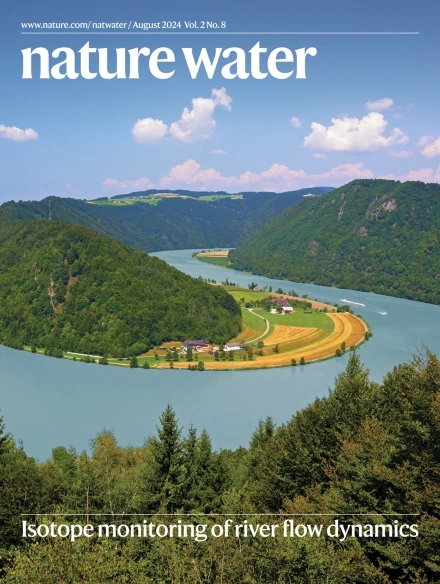- Programme area:Dimensions of Complexity of Aquatic Systems
Effects of land cover and protected areas on flying insect diversity
Attributing Urban Evapotranspiration From Eddy‐Covariance to Surface Cover: Bottom‐Up Versus Top‐Down
Evapotranspiration (ET) is an important process in the water cycle that can help reduce heat stress in cities. However, it is dependent on surface cover. The study provides insights that can inform urban planning and water management decisions, including improving the living environment of city dwellers.

Strong Subseasonal Variability of Oxic Methane Production Challenges Methane Budgeting in Freshwater Lakes
Evidence for a by-product mutualism in a group hunter depends on prey movement state
Researchers from the Cluster of Excellence Science of Intelligence (SCIoI), in which the Humboldt-Universität zu Berlin (HU Berlin) and the Leibniz Institute of Freshwater Ecology and Inland Fisheries (IGB) are involved, have proven in an underwater field study in the ocean off Mexico: the faster a school of prey moves, the higher the capture rate of the striped marlin.

Ecohydrological resilience and the landscape water storage continuum in droughts
A better understanding of water storage dynamics at medium scales, i.e. areas between 10 and 100 square kilometres, could help to better predict and ensure the availability of water resources, even in times of climate change. To this end, the researchers here synthesised findings from several long-term studies and introduced the concept of ecohydrological resilience.
Electrical conductivity fluctuations as a tracer to determine time-dependent transport characteristics in hyporheic sediments
The paper presents a modeling approach to estimate time-varying travel times from the stream water to the streambed. The modeling is based on fluctuations in electrical conductivity in the surface water and in the porewater. Given the high temporal dynamics of transport in streambed sediments, the model will be a valuable tool for the assessment of reactive transport in streambed sediments.
Persulfate activation by biochar and iron: Effect of chloride on formation of reactive species and transformation of N,N-diethyl-m-toluamide (DEET)
This study investigated the formation of reactive species during the activation of the chemical oxidant persulfate with biochar and iron in different water types for the removal of organic contaminants. The presence of organic matter and chloride altered the reactive species formed, emphasizing that the water matrix is a critical factor for the application of this oxidation process .

Mixtures of organic micropollutants exacerbated in vitro neurotoxicity of prymnesins and contributed to aquatic toxicity during a toxic algal bloom
This study investigated how organic micropollutants and the algal toxins prymnesins interact as mixtures in water extracts from the Oder River using neurotoxic effects on human nerve cells in vitro. The authors showed that prymnesins dominate the neurotoxic effects, but many of the detected organic micropollutants exacerbate the lethal effect of prymnesins.
Linking terrestrial biogeochemical processes and water ages to catchment water quality: A new Damköhler analysis based on coupled modeling of isotope tracers and nitrate dynamics
Catchment-scale nitrate dynamics involve complex coupling of hydrological transport and biogeochemical transformations, imposing challenges for source control of diffuse pollution. Coupled modeling of isotope tracers and nitrate dynamics revealed that upland arable areas impose pollution risks under drought while the river-connected lowlands are processing hotspots and more resilient to drought.
Unveiling nitrate origins in semiarid aquifers: A comparative analysis of Bayesian isotope mixing models using nitrate and boron isotopes and a Positive Matrix Factorization model
The authors identified the dominant sources of nitrate pollution and biogeochemical transformations in the semiarid region of the Meoqui-Delicias aquifer, Mexico, where the uncontrolled use of chemical fertilizers and manure lead to excessive nutrient input resulting in deterioration of groundwater quality. This provides an evidence base for policy-making to protect drinking water quality.






